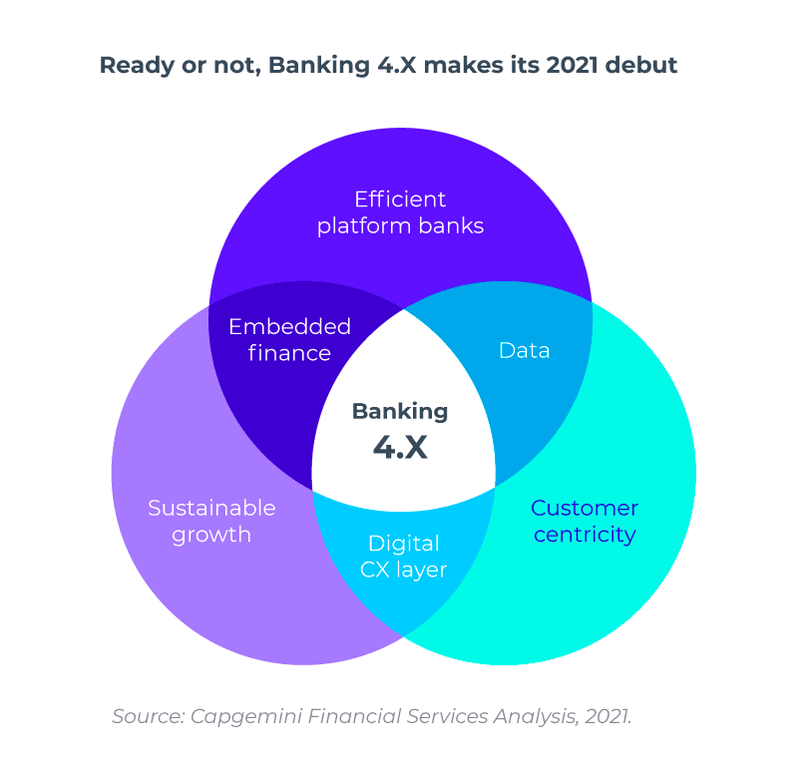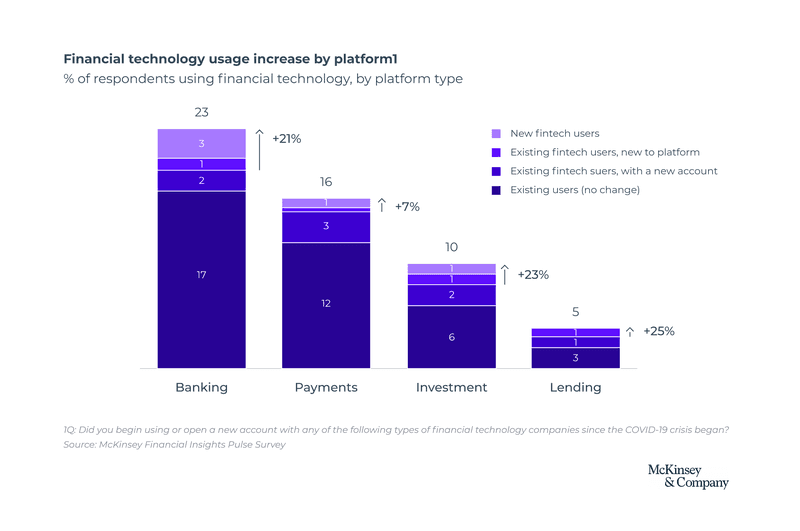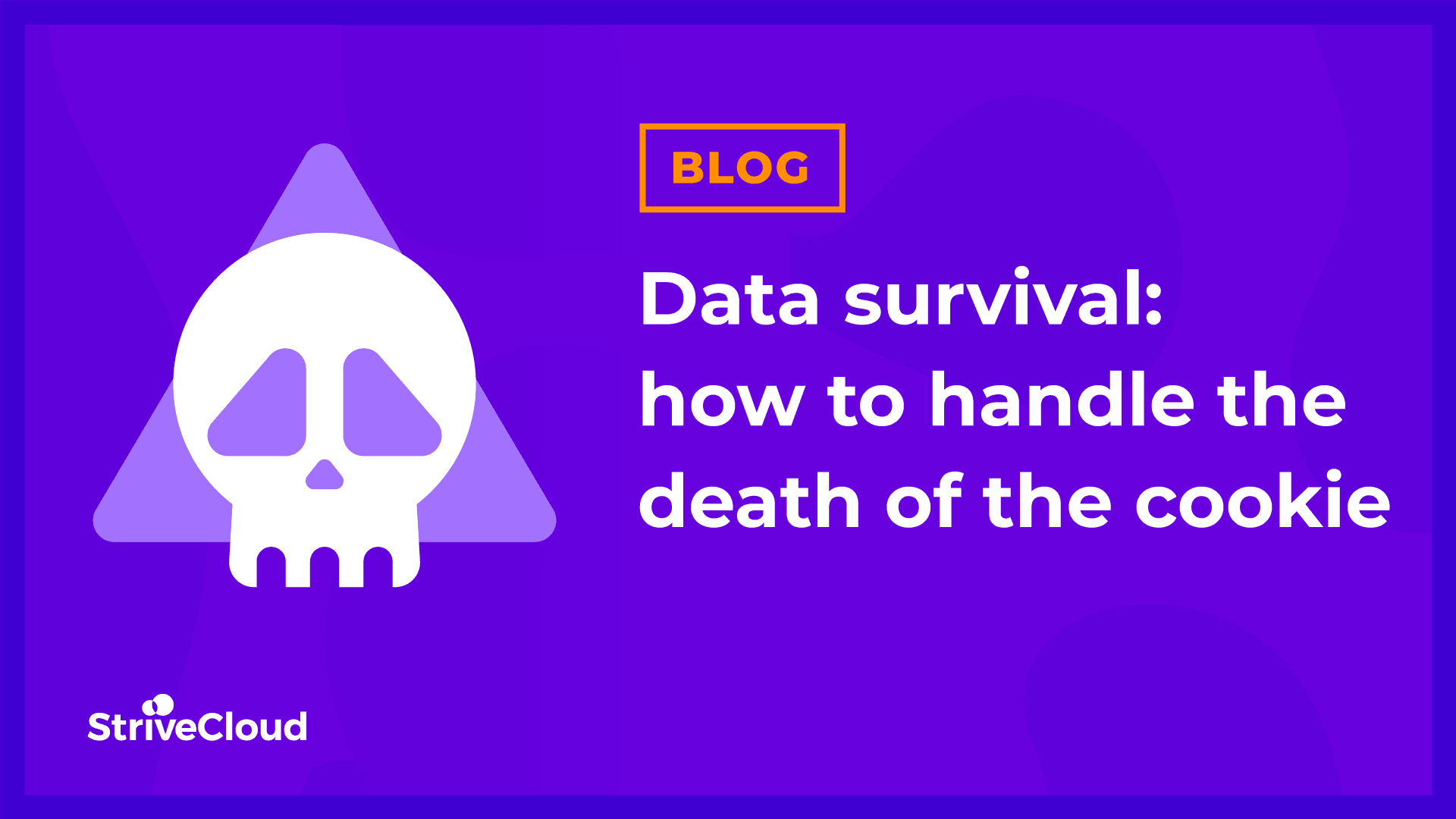

How to innovate in finance, future trends & challenges according to Bjorn Cumps
How to innovate in finance, future trends & challenges according to Bjorn Cumps

In this interview, finance expert Bjorn Cumps discusses the evolving landscape of fintech, highlighting customer experience as a key driver of innovation.
What is the most important trend in fintech today? If you ask Bjorn Cumps, professor of financial services innovation at Vlerick Business School and board member of Fintech Belgium, the answer is customer experience optimization! In short, the way people interact with their banks has completely changed. We interviewed Bjorn and asked him about the future changes, trends and challenges faced by the financial industry, and his favorite gamification examples!
Here’s what we talked about:
- Who is Bjorn Cumps (And why you should listen to him!)
- What are the trends in finance today?
- The biggest challenges faced by the finance industry
- Two sides of the gamification coin - pros and cons
- Recap
Who is Bjorn Cumps? (And why you should listen to him!)
Bjorn Cumps is a professor of management practice in financial services innovation & fintech at Vlerick Business School, and a board member of Fintech Belgium. His passion for technology turned into a fascination for fintech and how it brings traditional banks, tech companies & startups together.
At Vlerick Bjorn leads the fintech Bootcamp for Masters and MBA students on topics like fintech, platform business development, gaming, and esports. As an expert in Entreprise Architecture & Platform Ecosystem Management, Bjorn is also closely involved in research for businesses. Finally, he’s the driving force behind Vlerick’s gaming & esports Alumni Club.
We got the honor of interviewing him! Here’s what we talked about:
What are the trends in finance today?
When asked about the trends in fintech, Bjorn replies: “Technology-wise it’s probably the same as any other industry. Major developments in blockchain, AI & machine learning will change the outset for our industry. Finally, the intersection between technology and sustainability has gained lots of momentum in the last year.”
Everything starts with a great customer experience. Mainly, how can we make it more convenient for the customer?
In 2010 a surprisingly low 8% of British adults used mobile banking. Ten years later, however, that number shot up to 80%! This growth is affecting all sectors of fintech, but none more than banking.
Bjorn Cumps - "Mobile [in finance] started around 2011. But it was mostly relegated to early adopters, and uptake was slow. It has now really increased - many banks are now reporting numbers that almost half of their customer loans are being sold online."
The whole goal of fintech is to make financial services more convenient for the customers. The rising adoption of mobile banking is a great illustration of the growing trust in its capabilities and safety.
Delivering a good customer experience means putting the customer at the front of your design. For starters, your app needs a user-friendly interface. Secondly, your communications should be relevant, and ultimately you need to save the user time!
Time efficiency is one of the biggest motivators for using online banking over visiting the local branch. At the moment, the companies that understand this best are the new fintech entrants.

This graphic illustrates the emergence of the "Banking 4.X" model, prioritizing digital experiences and customer-centricity in the post-COVID era.
After Covid-19, a transformational shift emerged within the banking industry, known as Banking 4. X. From now on banks prioritize digital experiences and look for ways to implement these within the customer lifestyle in a seamless way. To achieve this, a business model where sustainable growth, efficient platform banks and customer-centricity come together is necessary.
But how are banks planning to deliver customer-centricity? According to Bjorn, the following two trends are the biggest way to it:
#1 Contextual banking brings users closer to your product.
Again, contextual banking is about customer experience optimization, as it makes things easier for the user. It requires a whole different approach as you try to tailor the experience to your customer's context, instead of your sales team.
Bjorn Cumps - "Contextual banking means going from a product-driven organization, built to sell financial products to customers, towards providing good solutions at the moment when the customer needs it."
With contextual banking, customers get offers tailored to them, at the most relevant time. A big challenge here is to understand the customer and their buying behavior. When do customers need a certain product? And what is the best time to make that offer?
Bjorn Cumps - "You never get up in the morning and say, ‘yeah, I really want to buy a mortgage from a bank.’ You need it...but the more convenient and contextual you make it, the better it will be."
Bjorn notes that while this trend has gained momentum, the technology is not quite there yet. Ultimately, it is dependent on the improvements in artificial intelligence. But it will get there, and sooner than you think, too. As you read this, banks analyze enormous sets of customer data and then perform tests to check their customers’ reactions. Without a doubt, AI is coming, and it will change the outset of the industry.
#2 Moving beyond banking & financial services
According to Bjorn, this is another big trend happening in finance today. Traditional banks and fintech alike are starting to offer cross-industry services like mobility, healthcare or even energy to improve the customer experience. Partnerships are especially popular in green energy, which can help establish brand trust with the eco-conscious millennial generation.
Bjorn Cumps - "Banking and insurance platforms are trying to turn into a broader service for their clients...they do that by linking with fintech."
Finance is not a fun thing to do. But you need it for buying a house, traveling, and virtually anything. By combining all services in one platform, you make the customer's life easier. For instance, you could integrate all services for buying a house like a notary, real estate, and loans into one user-friendly platform.
The biggest challenges faced by the finance industry
Keeping up with customer expectations
One of the biggest challenges in banking will be to keep fulfilling customer expectations. Just like any industry, customer expectations are rising. They expect their online banking experience to be as seamless as a native technology company like Facebook or Amazon.
To compete, banks need to make the customer experience both convenient and relevant. This is needed because people generally don’t think of banking as a fun or motivating activity.

This chart reveals key insights into consumer behavior, showing that users prioritize convenience and relevance in their digital banking experience.
Looking for something extra to keep your users engaged? Check out our app gamification software!
Building an integrated, omnichannel experience
Customers expect the same level of service, regardless of the platform. In fact, research shows that integrated strategies are the most effective! Whether they are using the app, website or visiting the branch, users want their experience to be fluent and personal.
In other words, the easier you make the process, the more likely customers will choose you.
Maintaining trust with customers
Bjorn says that “traditional finance players are still our most trusted advisors, even today - even after the financial crisis”. While fintech is rising in popularity, most people use it in addition to their traditional bank. But he predicts it won’t be that way for long.
Bjorn Cumps - "Trust and interaction is changing. Many of us who want to be served digitally are trusting online channels more and more. It also shows in the frequency and type of purchases we’re making"
Ultimately, customers are seeing the benefits of digital and so adoption is gaining pace. Currently, the only advantage traditional banks have over fintech is trust, but McKinsey & Company thinks the gap will close in the near future. So how do you create trust and improve the customer experience in the process?

This graph shows the shift in consumer behavior towards digital fintech solutions, indicating that trust in these platforms is steadily growing.
Really, according to Bjorn, trust is “earned gradually...but it gets faster as the word spreads”. There’s no magic formula to it! You build customer trust over time by showing you have their interests at heart. This can happen by providing excellent customer service - even if it means slowing down your service where appropriate.
Bjorn Cumps - "Of course, buying a mortgage shouldn’t be the same as ordering something on Amazon...that’s dangerous. The service could be processed in a second, we know that. But studies show that customers have more trust when the process lasts longer, even if it’s not needed."
As you’ll learn from successful fintech gamification examples, the role of gamification is not to build a game. Its purpose is to make the current action, in this case, banking more intuitive, interesting and fun!
Two sides of the gamification coin - Pros & Cons
One technique fintech apps have brought to banking is gamification. In short, gamification is the use of game-like elements in a non-game context. Often used gamification examples include badge reward systems, loyalty programs, and prizes.
You can see this in fintech apps like Revolut, Cake, or in traditional banking apps like BBVA. Across the board, gamification has boosted app engagement and retention. However, Bjorn points out that to achieve success, you must have the right gamification strategy.
New to gamification? Get started on our what is gamification page!
How NOT to do gamification
Bjorn Cumps - "Some major banks try and introduce one gamification element such as a progress bar, but alone it is not so effective. Customers are not stupid, they immediately see through it when gamification is just cosmetic."
For gamification to work its magic, Bjorn says you must have a “global approach”. In other words, you need a clear and consistent strategy! Don’t use gamification as last-minute set dressing, instead map out how to gamify your app from the outset, and then you can really harness its benefits.
Need a gamification strategy that works for you? Book a custom workshop & go home with an actionable gamification roadmap!
Take the French fintech app Shine, for example. With a well-produced gamification strategy, they boosted onboarding retention to 80%. But without a well-defined strategy, you risk not just inefficiency, but irresponsibility.
Bjorn Cumps - "There’s very beneficial aspects to gamification, but sometimes it is so fun and easy, and the interface is so intuitive, that it can backfire and take the serious part out of managing money or investing."
Take the example of Robin Hood, the stocks trading app. While their mission was to ‘democratize’ investing, the company was pressured to remove a digital confetti feature after it was found to be too addictive. Bjorn quotes one of the most influential people in fintech, Chris Skinner, on how easy it is to make ill-advised financial decisions when “banking is just seen as a game”.
To avoid this outcome, and boost your app in a responsible and cohesive way, you need the right gamification strategy, tailored to your app. Straight-up copying from other gamification examples won’t work.
How to do gamification the right way!
Bjorn Cumps - "A good way to use gamification is to incentivize desired behavior."
Here, Bjorn gives the example of a Spanish bank. The banking app uses well-known gamification examples like leaderboards and points systems to educate users on financial products and literacy. The leaderboard ranks users who watched the most educational videos and rewards them with redeemable points. Those at the top could exchange their points for rewards, such as discounts on movie tickets. This is a win-win situation for everybody!
Next to improving financial education, Bjorn says that gamification can be extremely powerful when it comes to motivating more sustainable living. He gives the recent example of the Belgian telecom giant Proximus, who launched the eco-conscious digital banking app Banx (done in partnership with Belfius and the B2B fintech company Doconomy).
This venture is based on the idea and success of Alipay in China, which incentivized users to be more CO2 friendly by giving points to reward sustainable habits like using public transportation, or buying bio-friendly products. All in all, experts predict that the program will plant over 600 million trees!

This screenshot shows a CO2 dashboard from a banking app, an excellent example of gamification used to incentivize sustainable behavior by tracking and rewarding eco-friendly choices.
To sum up, Bjorn shares his advice for developing a gamification strategy for a financial app that truly works:
“Have a very clear goal, incentivize ideal user behavior, and make the process fun and engaging. Gamification should be used to take away the barriers that limit a user from fully engaging.”
Recap
Who is Bjorn Cumps & why you should listen to him
Bjorn Cumps is a professor of management practice in financial services innovation & fintech at Vlerick Business School, and a board member of Fintech Belgium. His passion for technology turned into a fascination for fintech and how it brings traditional banks, tech companies & startups together.
The biggest trends in finance
#1 Contextual banking
Again, contextual banking is about customer experience optimization, as it makes things easier for the user. It requires a whole different approach as you try to tailor the experience to your customer's context, instead of your sales team.
Bjorn Cumps - "Contextual banking means going from a product-driven organization, built to sell financial products to customers, towards providing good solutions at the moment when the customer needs it."
With contextual banking, customers get offers tailored to them, at the most relevant time. A big challenge here is to understand the customer and their buying behavior. When do customers need a certain product? And what is the best time to make that offer?
#2 Moving beyond financial services
According to Bjorn, this is another big trend happening in finance today. Traditional banks and fintech alike are starting to offer cross-industry services like mobility, healthcare or even energy to improve the customer experience. Partnerships are especially popular in green energy, which can help establish brand trust with the eco-conscious millennial generation.
The biggest challenges faced by the finance industry
Keeping up with customer expectations
One of the biggest challenges in banking will be to keep fulfilling customer expectations. Just like any industry, customer expectations are rising. They expect their online banking experience to be as seamless as a native technology company like Facebook or Amazon.
Building an integrated, omnichannel experience
Customers expect the same level of service, regardless of the platform. In fact, research shows that integrated strategies are the most effective! Whether they are using the app, website or visiting the branch, users want their experience to be fluent and personal.
Maintaining trust with customers
Bjorn says that “traditional finance players are still our most trusted advisors, even today - even after the financial crisis”. While fintech is rising in popularity, most people use it in addition to their traditional bank. But he predicts it won’t be that way for long.
Bjorn Cumps - "Trust and interaction is changing. Many of us who want to be served digitally are trusting online channels more and more. It also shows in the frequency and type of purchases we’re making."
Two sides of the gamification coin - Pros & Cons
How NOT to do gamification
Bjorn Cumps - "Some major banks try and introduce one gamification element such as a progress bar, but alone it is not so effective. Customers are not stupid, they immediately see through it when gamification is just cosmetic."
For gamification to work its magic, Bjorn says you must have a “global approach”. In other words, you need a clear and consistent strategy! Don’t use gamification as last-minute set dressing, instead map out how to gamify your app from the outset, and then you can really harness its benefits.
How to do gamification the right way
Bjorn Cumps - "A good way to use gamification is to incentivize desired behavior."
Bjorn uses the example of a Spanish bank. The app uses well-known gamification examples like leaderboards and points systems to educate users on financial products and literacy. The leaderboard ranks users who watched the most educational videos and rewards them with redeemable points. Those at the top could exchange their points for rewards, such as discounts on movie tickets. This is a win-win situation for everybody!
Looking to build a gamification strategy that works for your app? Book a value-packed workshop & go home with an actionable roadmap, tailored to your app!
Related Posts

Why loyalty programs are changing (and how to keep up!)
Loyalty programs are changing. To build loyalty, the old transactional model is not enough. Instead, you need a user experience that engages from the very outset. With gamification features, you can create a reward system that keeps every user loyal. Welcome to loyalty 4.0.

Data survival: how to handle the death of the cookie
In 2021, the largest play in the web browser market Google Chrome will kill third-party cookies. They follow the example of both Safari and Firefox which have already dropped cookies last year. 2021 is the final countdown for marketers! You need to find ways of enriching your data with first-party cookies. So, how do you get your audience to share their data with you? And why should you start collecting first-party data now?

